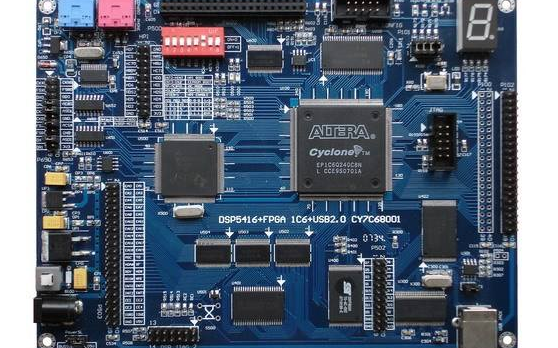
The composition, functions, advantages, and disadvantages of FPGA
Global electronic component supplier AMPHEO PTY LTD: Rich inventory for one-stop shopping. Inquire easily, and receive fast, customized solutions and quotes.
Field-Programmable Gate Arrays (FPGAs) are highly versatile integrated circuits that can be programmed and reconfigured to perform a wide range of digital logic operations. They are widely used in applications requiring high-speed processing, flexibility, and parallel computing. Below is a detailed analysis of the composition, functions, advantages, and disadvantages of FPGAs.

1. Composition of FPGAs
FPGAs consist of several key components that work together to enable their programmable functionality:
1.1. Configurable Logic Blocks (CLBs)
-
Function: CLBs are the basic building blocks of an FPGA, containing look-up tables (LUTs), flip-flops, and multiplexers.
-
Purpose: They implement combinatorial and sequential logic functions.
1.2. Programmable Interconnects
-
Function: A network of wires and switches that connect CLBs and other components.
-
Purpose: Allows flexible routing of signals between logic blocks.
1.3. Input/Output Blocks (IOBs)
-
Function: Interface between the FPGA and external devices.
-
Purpose: Handle input and output signals, supporting various voltage standards and protocols.
1.4. Block RAM (BRAM)
-
Function: On-chip memory blocks for data storage.
-
Purpose: Used for buffering, caching, and implementing memory-intensive functions.
1.5. Digital Signal Processing (DSP) Blocks
-
Function: Specialized blocks for performing arithmetic operations like multiplication and addition.
-
Purpose: Accelerate signal processing tasks (e.g., FFT, FIR filters).
1.6. Clock Management
-
Function: Includes phase-locked loops (PLLs) and delay-locked loops (DLLs).
-
Purpose: Generate and manage clock signals for synchronization.
1.7. Embedded Processors (Optional)
-
Function: Hard or soft processor cores (e.g., ARM Cortex, MicroBlaze).
-
Purpose: Enable software-programmable control and processing.
2. Functions of FPGAs
FPGAs are used in a wide range of applications due to their flexibility and reprogrammability. Key functions include:
2.1. Digital Logic Implementation
-
Implement custom digital circuits, such as state machines, counters, and arithmetic logic units (ALUs).
2.2. Signal Processing
-
Perform real-time signal processing tasks, such as filtering, modulation, and encoding/decoding.
2.3. Prototyping and Emulation
-
Prototype and test new hardware designs before manufacturing ASICs or custom chips.
2.4. Parallel Processing
-
Execute multiple tasks simultaneously, making them ideal for high-performance computing.
2.5. Interface Bridging
-
Connect and translate between different communication protocols (e.g., PCIe, Ethernet, USB).
2.6. Custom Accelerators
-
Accelerate specific tasks, such as machine learning inference, cryptography, and image processing.
3. Advantages of FPGAs
FPGAs offer several benefits over other types of hardware, such as microcontrollers and ASICs:
3.1. Flexibility
-
Can be reprogrammed to perform different functions, making them suitable for a wide range of applications.
3.2. Parallelism
-
Support parallel processing, enabling high-speed and real-time performance.
3.3. Customizability
-
Allow designers to create highly optimized hardware for specific tasks.
3.4. Time-to-Market
-
Faster development cycles compared to ASICs, as no fabrication is required.
3.5. Reconfigurability
-
Can be updated or modified in the field, reducing the need for hardware replacements.
3.6. Energy Efficiency
-
Optimized hardware designs can achieve lower power consumption compared to general-purpose processors.
4. Disadvantages of FPGAs
Despite their advantages, FPGAs also have some limitations:
4.1. Cost
-
Higher unit cost compared to microcontrollers and general-purpose processors.
4.2. Complexity
-
Designing for FPGAs requires specialized knowledge of hardware description languages (HDLs) like Verilog or VHDL.
4.3. Power Consumption
-
While optimized designs can be efficient, FPGAs generally consume more power than ASICs for the same task.
4.4. Limited Resources
-
Finite number of CLBs, DSP blocks, and memory, which can constrain complex designs.
4.5. Development Tools
-
FPGA design tools can be expensive and have a steep learning curve.
4.6. Latency
-
Reconfigurability can introduce latency compared to fixed-function hardware like ASICs.
5. Applications of FPGAs
FPGAs are used in a variety of industries and applications, including:
5.1. Telecommunications
-
Baseband processing, error correction, and network protocol handling.
5.2. Automotive
-
Advanced driver-assistance systems (ADAS), infotainment, and engine control.
5.3. Aerospace and Defense
-
Radar systems, secure communications, and avionics.
5.4. Data Centers
-
Accelerating machine learning, database operations, and network processing.
5.5. Industrial Automation
-
Motor control, robotics, and real-time monitoring.
5.6. Consumer Electronics
-
Video processing, gaming consoles, and IoT devices.
6. Comparison with Other Technologies
| Feature | FPGA | ASIC | Microcontroller |
|---|---|---|---|
| Flexibility | High | Low | Moderate |
| Performance | High (parallel) | Very High | Low to Moderate |
| Power Consumption | Moderate to High | Low | Low |
| Cost | High | Very High (NRE) | Low |
| Development Time | Moderate | Long | Short |
| Reconfigurability | Yes | No | Limited |
7. Conclusion
FPGAs are powerful and flexible devices that enable rapid prototyping, parallel processing, and custom hardware acceleration. While they offer significant advantages in terms of flexibility and performance, they also come with challenges such as higher costs and design complexity. Understanding their composition, functions, and trade-offs is essential for selecting the right technology for a given application.
